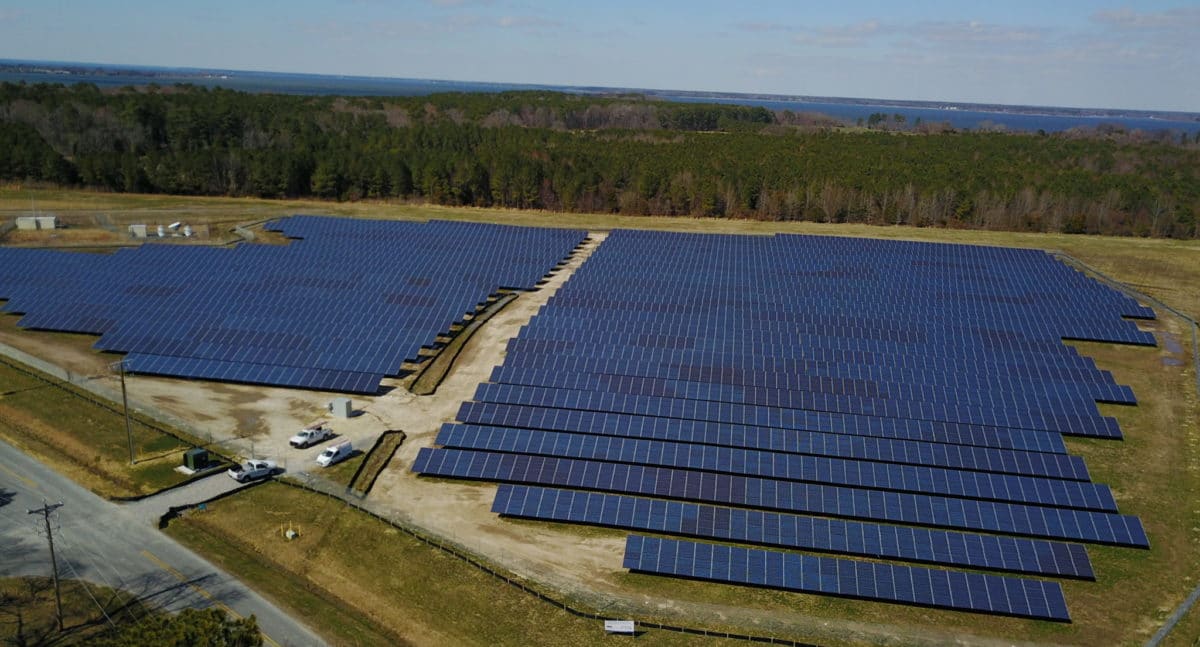By Tony Clifford
 These sure are crazy times to be in the solar industry, aren’t they?
These sure are crazy times to be in the solar industry, aren’t they?
Just when the U.S. solar market is finally adjusting to the insane 30% tariffs imposed by the Trump Administration in January, along comes the Chinese government to slash its domestic market by halting new projects and lowering the rates it will pay consumers for using clean energy.
Guess where many of those excess modules from all the Chinese manufacturers are going to go? Yep, right here to the good ol’ U.S. of A.
Some analysts are predicting that module prices will drop to the pre-tariff level of 39 cents by the end of the third quarter. Around the end of 2018, when the massive module oversupply truly hits, some analysts are saying the price of modules could plummet to 24 cents per watt.
Now I can’t quite figure out how the math works on that one—after all, no matter how low prices go, a 30% tariff is still in place—but even if those end-of-year estimates are off by a cool 10 cents, that’s still much lower than where they are today and even where they were two years ago, during solar’s greatest growth year ever.
And you know what that means? Deals that had been taken off the table because of the additional tariff costs are suddenly back on the table. Markets that were rendered uneconomic by the Trump tariff, including many in the Southeast and Midwest, should come roaring back. Even more projects will become economic in established solar states.
I know our own business development teams are taking calls from dealmakers we’ve previously turned down because the deals they offered didn’t pencil out in light of the tariffs, and I know they are aiming to restart some of those talks in light of the most recent news about potentially falling module prices. I, for one, am excited about the prospect of having even more deals to do in the second half of 2018 going into 2019.
Of course, just like it was the segment most damaged by the tariffs, the utility-scale sector will be the segment most likely to bounce back most quickly if prices dive the way people are suggesting they will.
Modules still make up a high percentage of utility-scale costs, so when those costs come down, so do overall prices for utility-scale projects. I have a lot of friends in that segment of the business that have been sweating bullets since January. These somewhat inexplicable decisions by the Chinese government will have them sweating a little less.
The only thing that upsets me a little is that if prices are going to be as low as some experts are predicting with the tariffs, how low could they possibly be without the tariffs? Can you imagine the solar boom that would result if those nonsensical 30% duties were removed, too?
What I view was the final upside to the Chinese decision is that it may finally force a long overdue consolidation of module manufacturers. I believe this oversupply will once again force Chinese manufacturers to sell their modules at below production prices, which is going to squeeze margins not only on them but on all module manufacturers. And that will allow the market to deal with what is still an unnecessarily large number of global module manufacturers.
I said four years ago that we’d be able to tell when the solar industry was a mature market when eight to 10 module manufacturers had fully 80% of the market. I stand by that today, and squeezing margins once again will separate the wheat from the chaff and bring us closer to that magic number than ever before.
Of course, the wild card here is the Trump Administration. No one can predict what the president or his economic team will do—if anything—to stop this potential solar boom in its tracks. They could impose higher tariffs, they could charge an import duty—the possibilities are nearly endless. And each of those decisions could potentially screw up what would be unalloyed good news for the downstream solar market.
But that discussion is all in the future. Right now, module prices are set to plummet with a surprising assist from the Chinese government, and the solar industry in the United States could quickly return to its full strength. How quickly we can seize on this victory depends on how nimble we all are.
Tony Clifford serves as chief development officer for Standard Solar. Since 2007 Mr. Clifford has led Standard Solar’s rapid growth into a nationally known PV developer and finance firm. He began his career at Solarex Corporation, later acquired by British Petroleum (BP Solar). He is a board member of the Solar Energy Industries Association, serves on SEIA’s Executive Committee and also served as the president of the regional chapter, MDV-SEIA from 2009 to 2012. Finally, he is a member of pv magazine USA’s Editorial Advisory Board.
The views and opinions expressed in this article are the author’s own, and do not necessarily reflect those held by pv magazine.
This content is protected by copyright and may not be reused. If you want to cooperate with us and would like to reuse some of our content, please contact: editors@pv-magazine.com.








Interesting article, it supposes module manufacturers will sell below cost versus slowing production, or sending production to emerging markets. It also does not account for Chinese product tariff that still exist due the AD/CVD tariff. So China modules coming to the US have two tariff’s costs prior to passing US customs. Paying duties to bring modules with very thin margins means a very difficult cash flow model for dumping low cost, or under cost modules here. Setting expectations for US modules to plummet .24 per watt from current costs will severely impact how module manufacturers will approach US market.
Well, things changed right now due to the trade fighting between those two nations, China now in deep shit self, and the reason it stop printing money to support Solar because if keep doing that will caused economic crush. I heard so far is slowing production from Chinese manufactures, they are smart enough to not repeat this stupid failure like Yingli did before, and cash flow is the most important thing to survive now. You could not image how fast the cost inside Chinese manufacturing increasing recently, and more and more companies moved out asap. Whoever still sell below the cost to passing into US market will gone in a year or less, so would you dare to buy their modules?
Sun power quit utility scale market, Solar world gone, first solar is low efficiency, the whole supply chain is in Chinese manufactures hands, and US worst market still 6.6GW so far, so that the smart way is to NOT lower the margin, pay the tariffs and let US customers to pay for that, or basically are our tax payer! What you can do about it?
So my personal opinion, do not trust those “Analysis” at all!
Many Chinese manufacturers are exploring markets outside of the US .